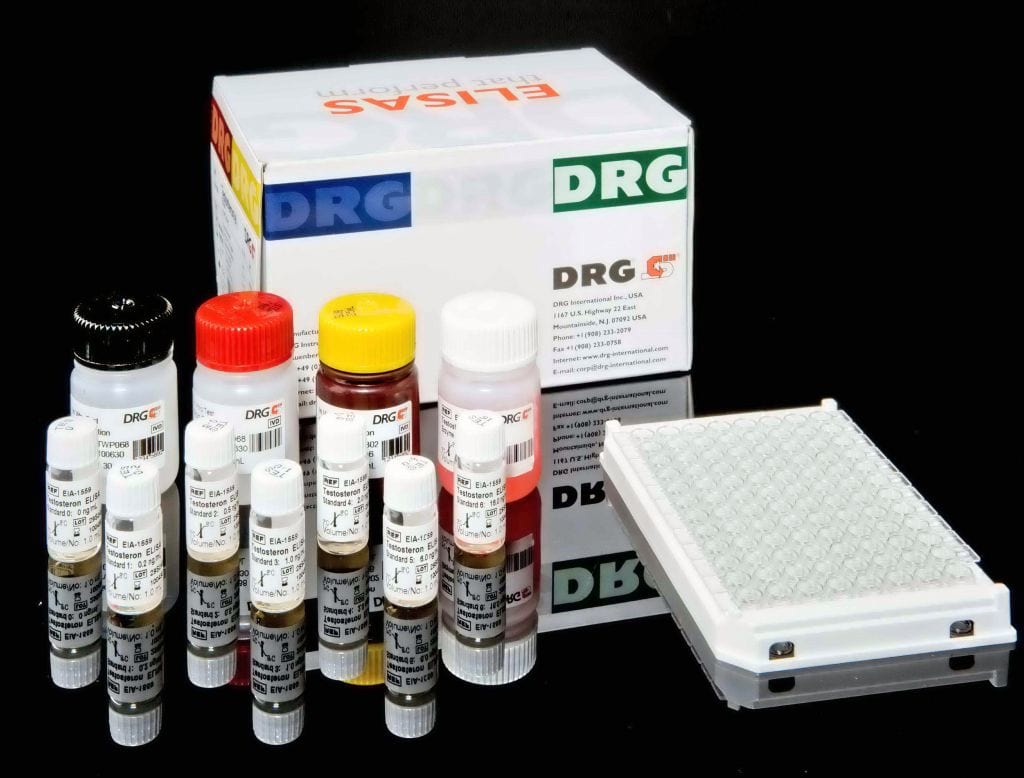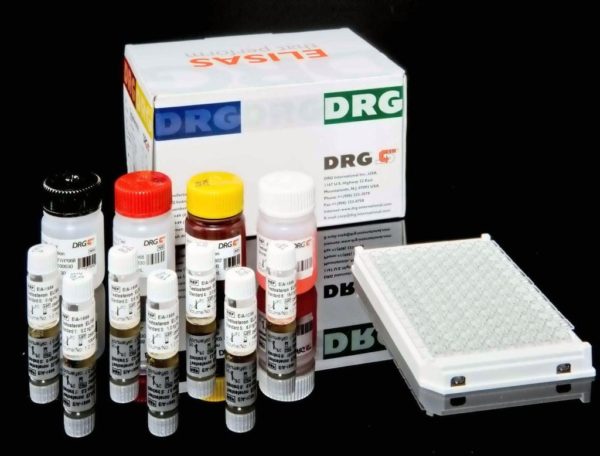Description
The DRG Helicobacter pylori IgG (Recombinant) Enzyme Immunoassay Kit provides materials for the quantitative and qualitativedetermination of IgG-class antibodies to Helicobacter pylori in human serum and plasma.This assay is intended for in vitro diagnostic use only.Helicobacter pylori is a spiral Gram-negative bacterium (2-6.5 µm in size, flagellated) which colonizes the human gastric mucosa. The organism is found in the mucus layer and adheres to the surface mucus epithelium of the stomach but generally does not penetrate the gastric mucosa directly. However, there is a secondary inflammatory response in the mucosa leading to chronic active gastritis. Helicobacter pylori is the primary causative agent in most cases of peptic ulcer disease. In 1994 the WHO classified Helicobacter pylori as a category 1 carcinoma. Infection rate in Europe is about 30%-40%, worldwide about 50%. There is an inverse relationship between the presence of Helicobacter pylori infection and socioeconomic status. In developing countries, people acquire the infection at an early age such that by young adulthood as many as 90% of the population might have Helicobacter pylori gastritis. In developed western countries the prevalence of Helicobacter pylori gastritis is much lower. Under these conditions, the rate of acquisition is much slower (roughly 1% per annum) and the older one is, the more likely one is to be infected with the organism
The DRG Helicobacter pylori IgG ELISA Kit is a solid phase enzyme-linked immunosorbent assay (ELISA)Microtiter wells as a solid phase are coated with recombinant Helicobacter pylori Cag A antigen. Diluted patient specimens and ready-for-use controls are pipetted into these wells. During incubation Helicobacter pylori-specific antibodies of positive specimens and controls are bound to the immobilized antigens. After a washing step to remove unbound sample and control material horseradish peroxidase conjugated anti-human IgG antibodies are dispensed into the wells. During a second incubation this anti_IgG conjugate binds specifically to IgG antibodies resulting in the formation of enzyme-linked immune complexes. After a second washing step to remove unbound conjugate the immune complexes formed (in case of positive results) are detected by incubation with TMB substrate and development of a blue color. The blue color turns into yellow by stopping the enzymatic indicator reaction with sulfuric acid. The intensity of this color is directly proportional to the amount of Helicobacter pylori-specific IgG antibody in the patient specimen. Absorbance at 450 nm is read using an ELISA microtiter plate reader.




